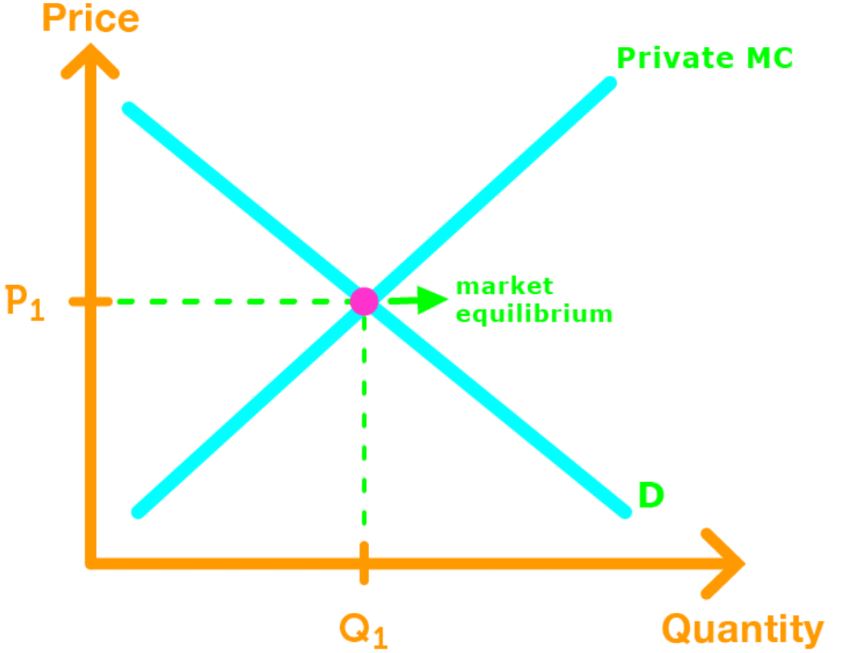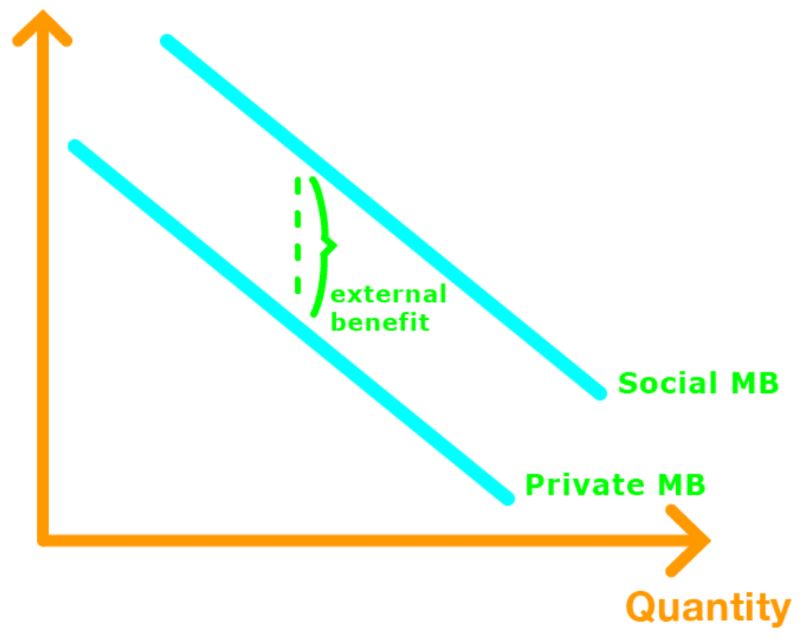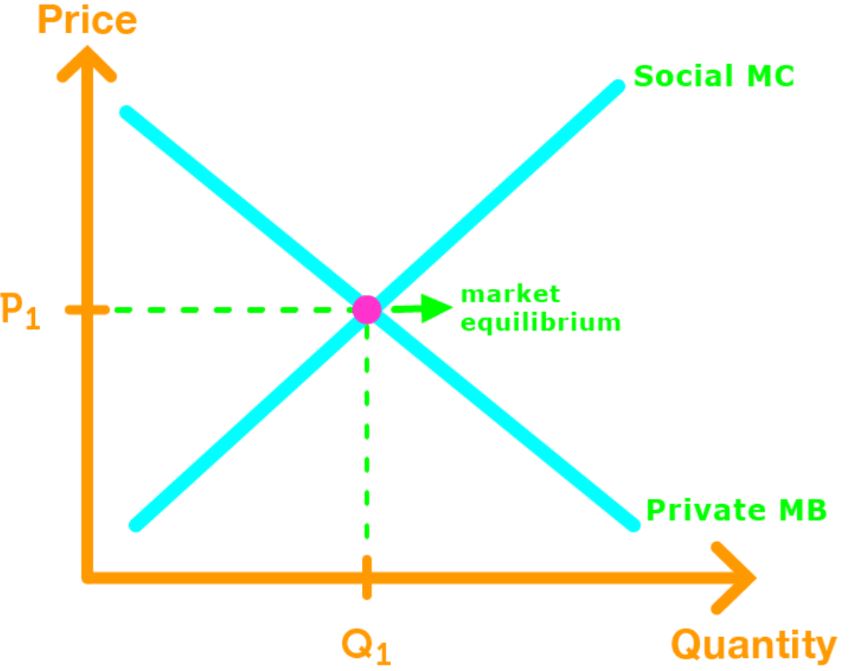Externality: A cost or benefit from a production that affects the well-being of another person, but is not compensating or being compensated for what the production did.
Within externalities, there is
- Negative externality: this creates a cost
- Positive externality: this creates a benefit
Externalities are also known as spill overs onto third parties.
There are four types of externalities
- Negative Production Externalities: Clearing forests destroys habitat of wildlife and adds more carbon dioxide to the atmosphere.
- Positive Production Externalities: Beekeepers keeping bees for their honey. The positive externality would be the pollination from surrounding crops by the bees.
- Negative Consumption Externalities: Smoking cigarettes pollutes the air around you and imposes a health risk to others.
- Positive Consumption Externalities: Maintaining an attractive house can increase the market price for houses around your neighbourhood.
Private, External, Social Cost
Now lets investigate negative externality.
Private Cost of Production: cost incurred by the producer of a good or service .
Marginal Private Cost (MC) : Additional private cost gained from a one-unit increase in production of a good or service.
External Cost of Production : a cost that is not incurred by the producer but incurred by other people.
Marginal External Cost : Additional external cost gained from a one-unit increase in production of a good or service.
Social Cost of Production : Total cost to society resulting from productions made by individuals and firms.
Marginal Social Cost (MSC) : cost incurred by the entire society from a one-unit increase in production.
Effects of Negative Externalities
Suppose we have the demand curve and the private MC curve. The market equilibrium would be the intersection of those two curves.

However, they are externality costs not covered by the firms, and incurred by others. Taking those into account, we graph the MSC curve.

Therefore, the intersection between the MSC and Demand curve is the socially optimal output.
Note: Since Q1 > Q2, we have an overproduction, thus a deadweight loss.
Private Benefit, & Social Benefit
Now lets investigate positive externality.
Marginal Private Benefit: The demand curve which does not take external benefit into account.
Marginal Social Benefit: A curve that takes all the benefits into account.

Effects of Positive Externality
Suppose we have the demand curve (MPB) and the MSC curve. The market equilibrium would be the intersection of those two curves.

However, they are externality benefit not covered. Taking the external benefit into account, we graph the MSB curve.

Therefore, the intersection between the MSB and MSC is the socially optimal output.
Note: Since Q2>Q1, we have an underproduction, thus a deadweight loss.






